A rare Meissen armorial two-handled beaker and saucer from the Campoflorido service, circa 1739-40Each painted with the arms of Campoflorido, on the beaker against a continuous Kauffahrtei scene of merchants and their wares by a quayside above two iron-red lines, the saucer with scattered indianische Blumen on both sides, gilt-edged rims, the saucer: 13cm diam.; the beaker: 8cm high, crossed swords marks in underglaze blue (2)FootnotesProvenance: The Property of a Gentleman Sale, Christie's, London, 29 November 1973, lot 181 This coat-of-arms had been long been thought to belong to the Mauro d'Aversa family, which obscured the history of the Meissen porcelain painted with these arms. It is now known that the arms belong to Don Luigi Reggio e Branciforte, known as the prince of Campoflorido. Campoflorido was the Spanish ambassador to Venice at the time of Crown Prince Friedrich Christian of Saxony's Grand Tour of Italy between 1738 and 1740. Parts of a table service have survived with a more elaborate version of the same coat-of-arms, including ermine and the Order of St. Januarius, which was established by the King of Naples on 8 July 1738 to commemorate his marriage to Princess Maria Amalia of Saxony. The service is thought to have been given as a gift in gratitude for Campoflorido's hospitality during the crown prince's stay in Venice. The service in its entirety was much admired in 1745 by the duc de Luynes, when he observed it in use at a dinner in Campoflorido's home in Paris. 'We noted a very beautiful porcelain service which was used at both tables; it displayed the coat of arms of the ambassador; it seemed quite substantial; there are even covers to go over the plates. The Royal Prince of Poland gave him a gift and has added to it since' (M. Cassidy-Geiger (ed.), Fragile Diplomacy, 2007, p. 229). The absence of the Order of St. Januarius on the chocolate beaker suggests that this service may predate the larger table service. The impressed Dreher's marks on the beaker and saucer also suggest a date of manufacture before 1739, whereas the table service has impressed numerals. This may explain the reference in a letter of January 1740, in which the Saxon agent in Venice wrote to Count Brühl that he had mentioned to Prince Campoflorido that the porcelain promised to him would be ready in February, yet the table service is not mentioned in the manufactory work reports until June 1741, although it is possible that existing models were used prior to this date. Intriguingly, Count Brühl wrote to the Saxon agent in Venice in December 1740, requesting another rendering of Campoflorido's arms, since the original at Meissen had been lost (Cassidy-Geiger, ibid.). It is possible that the agent's mention of porcelain in January 1740 refers to the present service, and the new rendering of the arms - presumably including the Order of St. Januarius - was used for the table service some 18 months or so later.
A rare Meissen armorial two-handled beaker and saucer from the Campoflorido service, circa 1739-40Each painted with the arms of Campoflorido, on the beaker against a continuous Kauffahrtei scene of merchants and their wares by a quayside above two iron-red lines, the saucer with scattered indianische Blumen on both sides, gilt-edged rims, the saucer: 13cm diam.; the beaker: 8cm high, crossed swords marks in underglaze blue (2)FootnotesProvenance: The Property of a Gentleman Sale, Christie's, London, 29 November 1973, lot 181 This coat-of-arms had been long been thought to belong to the Mauro d'Aversa family, which obscured the history of the Meissen porcelain painted with these arms. It is now known that the arms belong to Don Luigi Reggio e Branciforte, known as the prince of Campoflorido. Campoflorido was the Spanish ambassador to Venice at the time of Crown Prince Friedrich Christian of Saxony's Grand Tour of Italy between 1738 and 1740. Parts of a table service have survived with a more elaborate version of the same coat-of-arms, including ermine and the Order of St. Januarius, which was established by the King of Naples on 8 July 1738 to commemorate his marriage to Princess Maria Amalia of Saxony. The service is thought to have been given as a gift in gratitude for Campoflorido's hospitality during the crown prince's stay in Venice. The service in its entirety was much admired in 1745 by the duc de Luynes, when he observed it in use at a dinner in Campoflorido's home in Paris. 'We noted a very beautiful porcelain service which was used at both tables; it displayed the coat of arms of the ambassador; it seemed quite substantial; there are even covers to go over the plates. The Royal Prince of Poland gave him a gift and has added to it since' (M. Cassidy-Geiger (ed.), Fragile Diplomacy, 2007, p. 229). The absence of the Order of St. Januarius on the chocolate beaker suggests that this service may predate the larger table service. The impressed Dreher's marks on the beaker and saucer also suggest a date of manufacture before 1739, whereas the table service has impressed numerals. This may explain the reference in a letter of January 1740, in which the Saxon agent in Venice wrote to Count Brühl that he had mentioned to Prince Campoflorido that the porcelain promised to him would be ready in February, yet the table service is not mentioned in the manufactory work reports until June 1741, although it is possible that existing models were used prior to this date. Intriguingly, Count Brühl wrote to the Saxon agent in Venice in December 1740, requesting another rendering of Campoflorido's arms, since the original at Meissen had been lost (Cassidy-Geiger, ibid.). It is possible that the agent's mention of porcelain in January 1740 refers to the present service, and the new rendering of the arms - presumably including the Order of St. Januarius - was used for the table service some 18 months or so later.


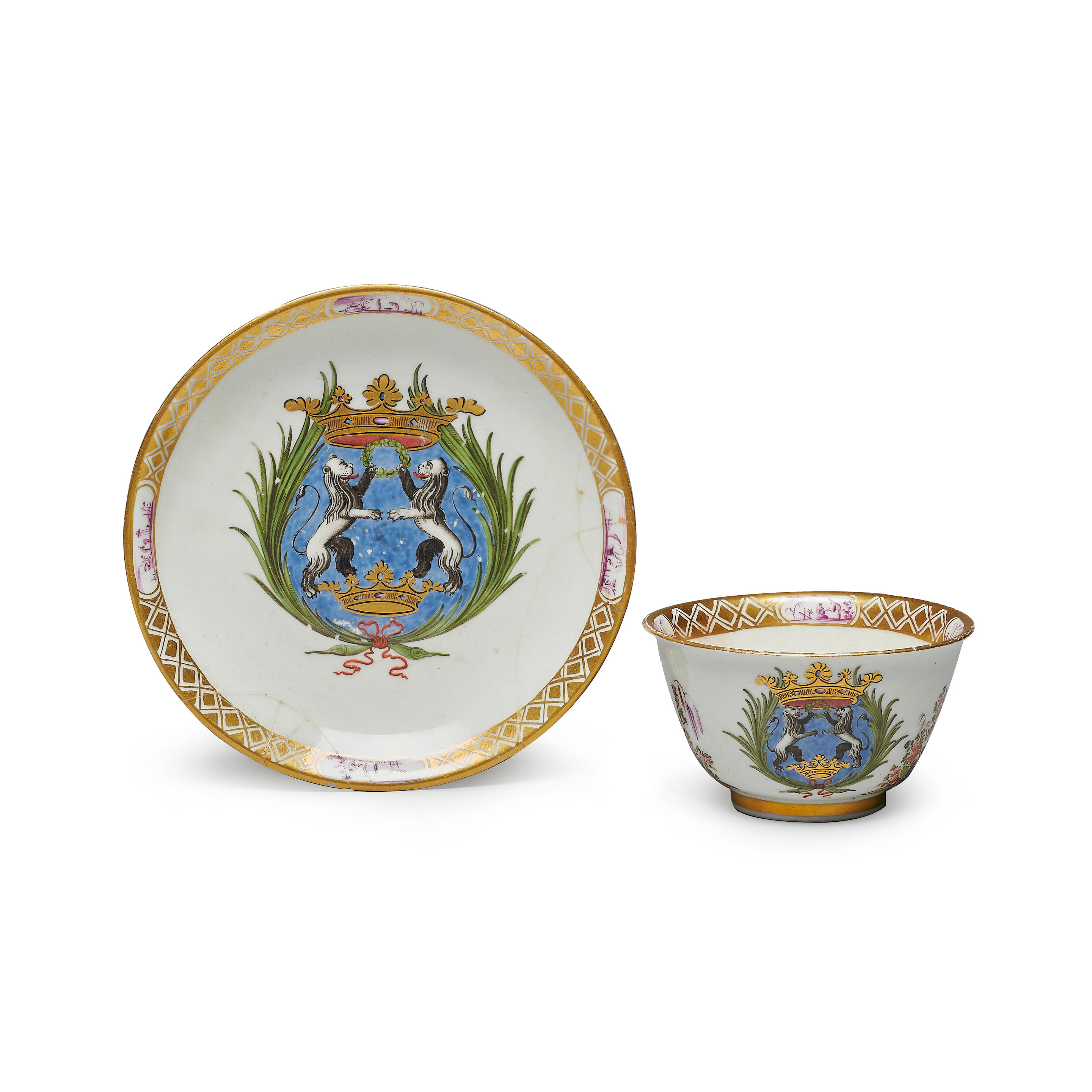
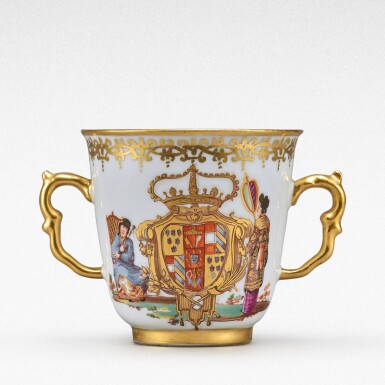


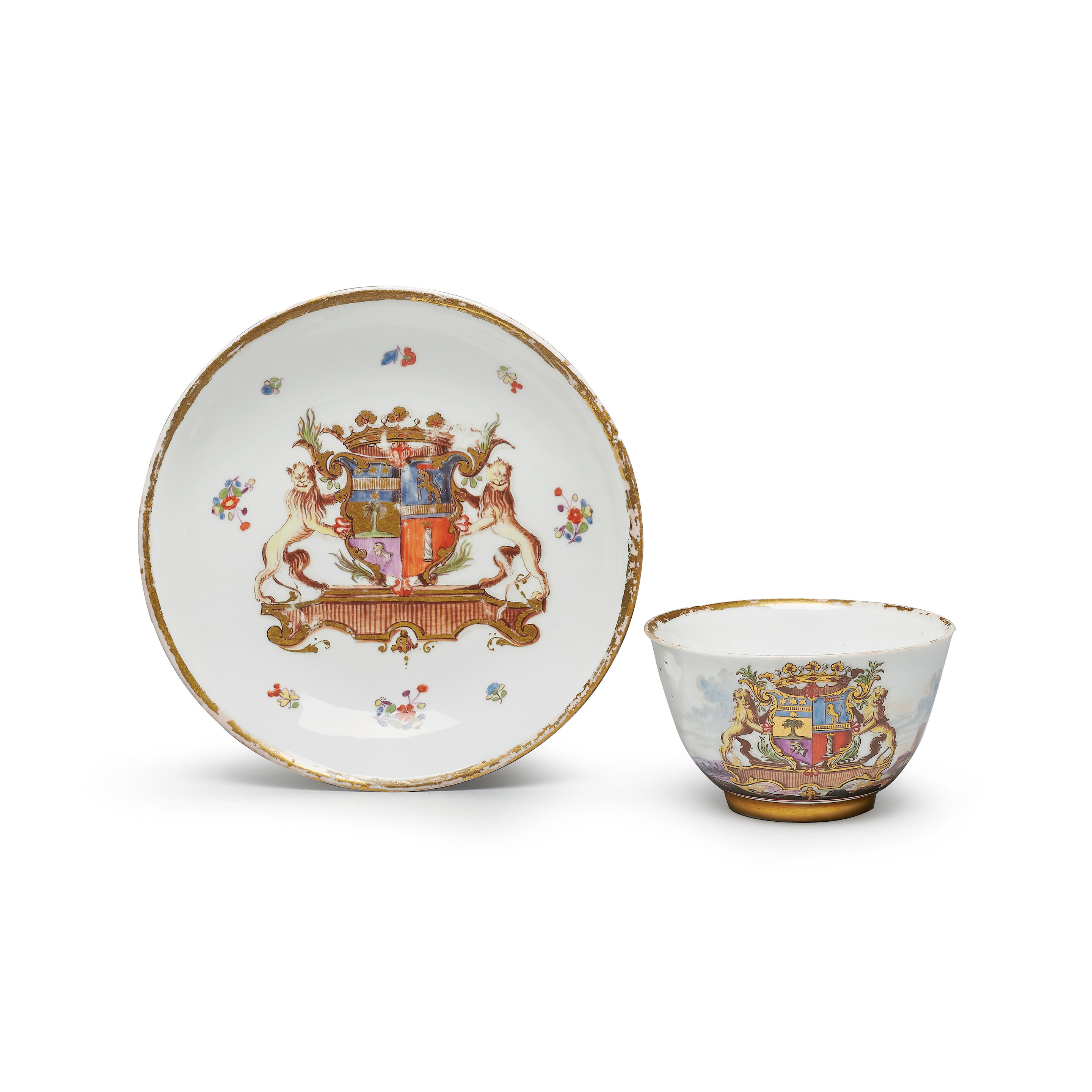
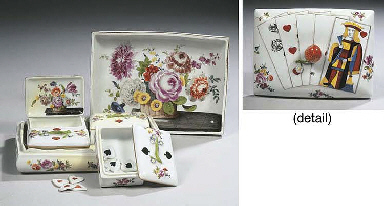


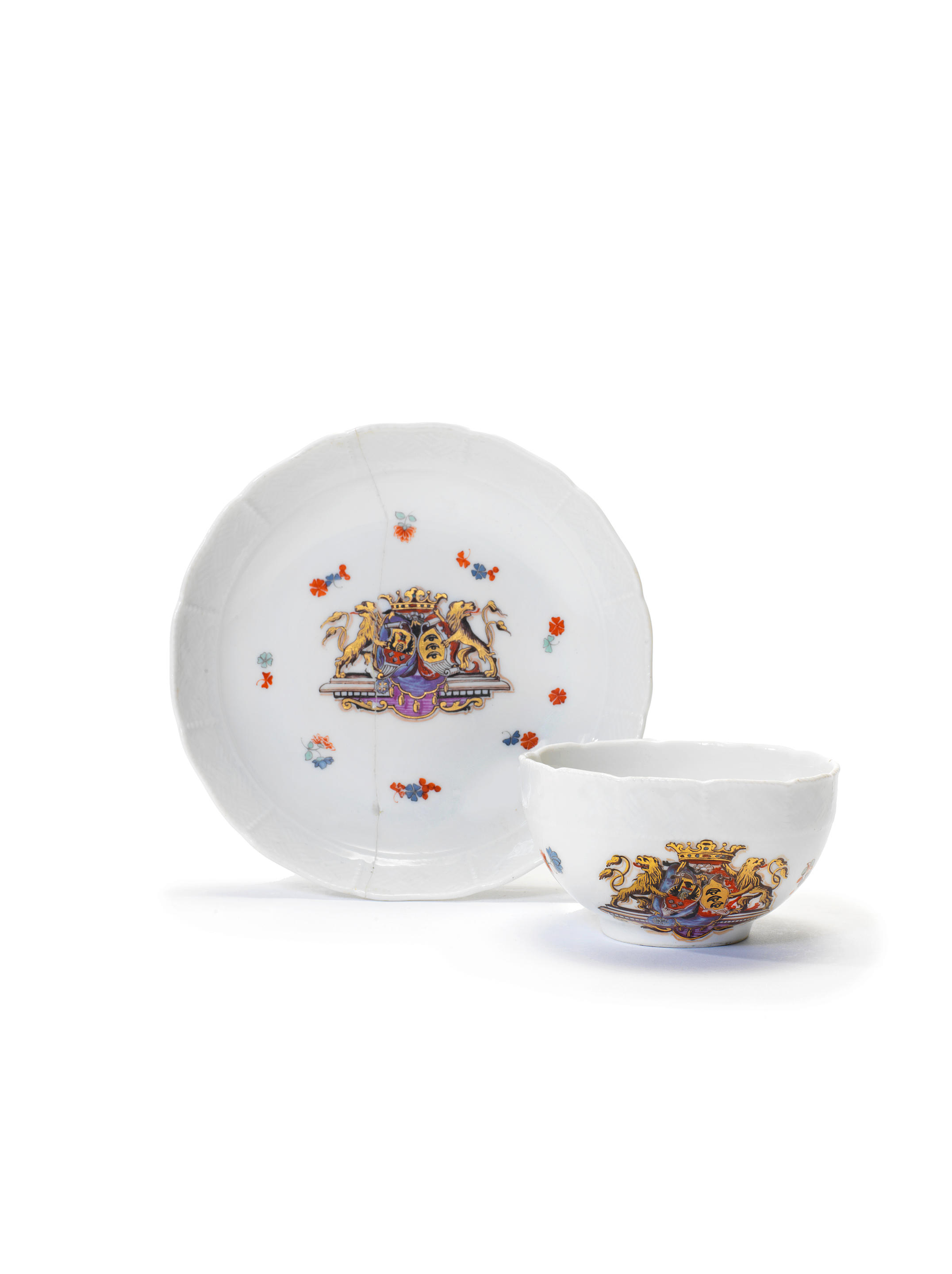
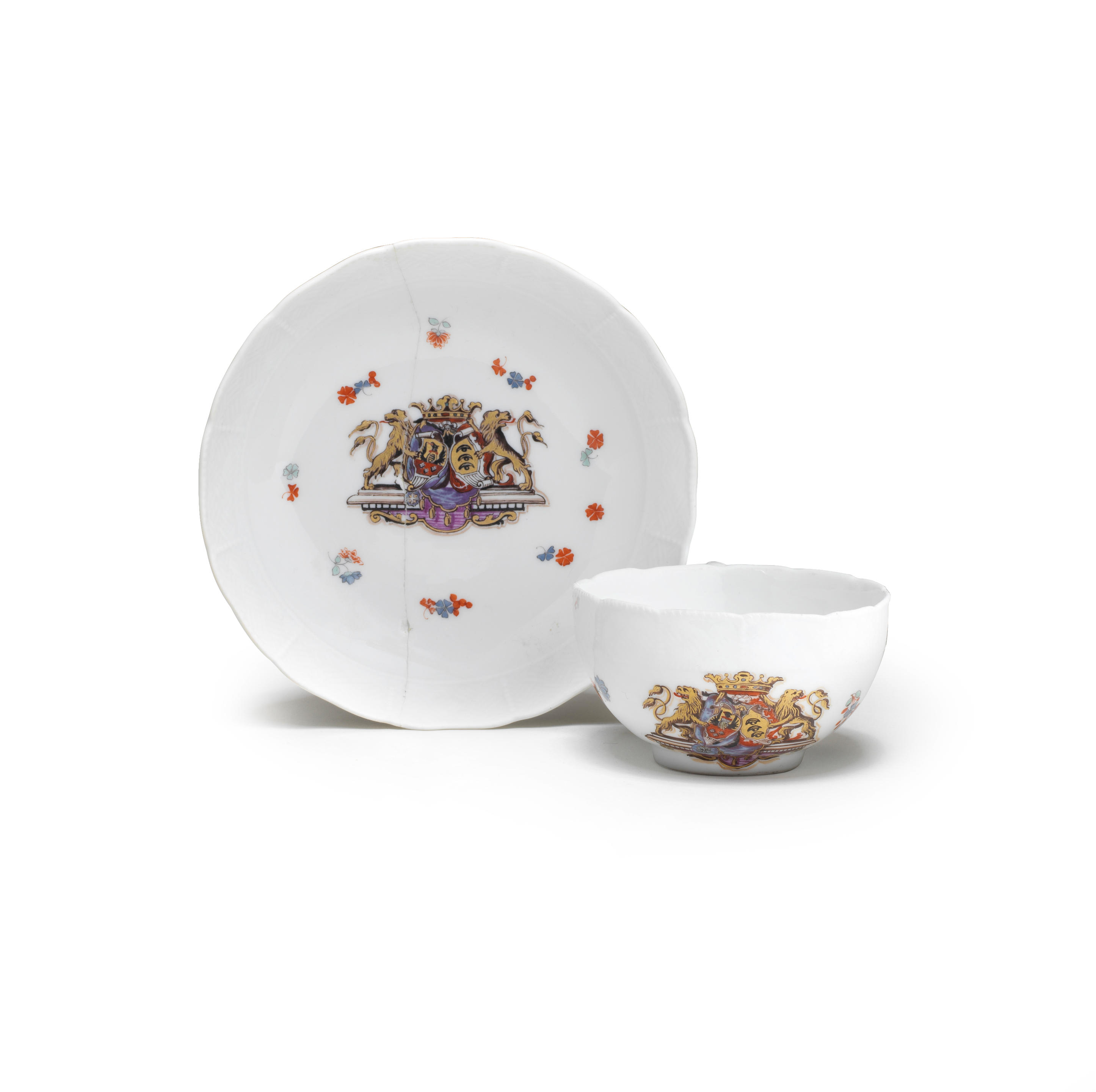

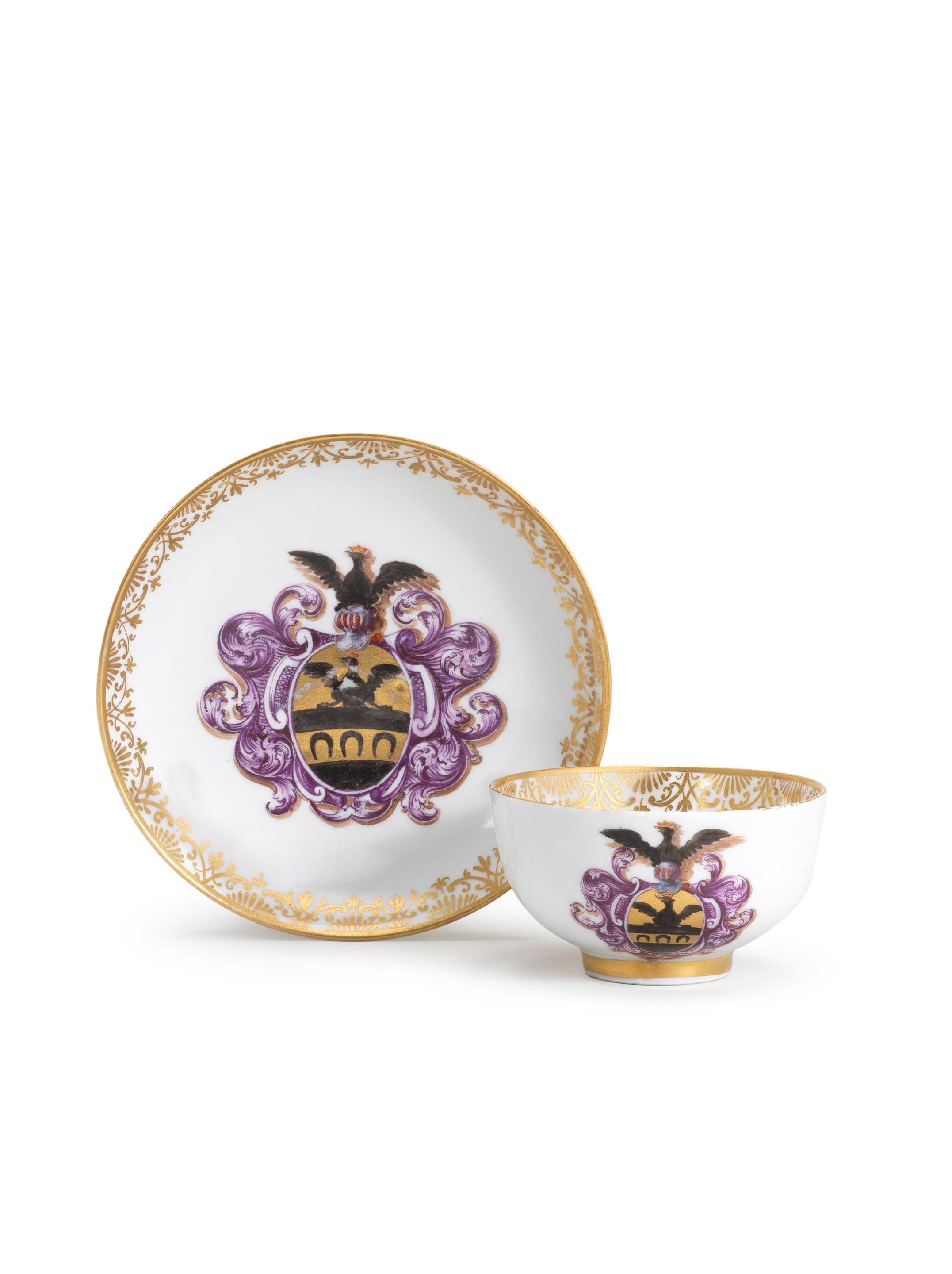
Testen Sie LotSearch und seine Premium-Features 7 Tage - ohne Kosten!
Lassen Sie sich automatisch über neue Objekte in kommenden Auktionen benachrichtigen.
Suchauftrag anlegen